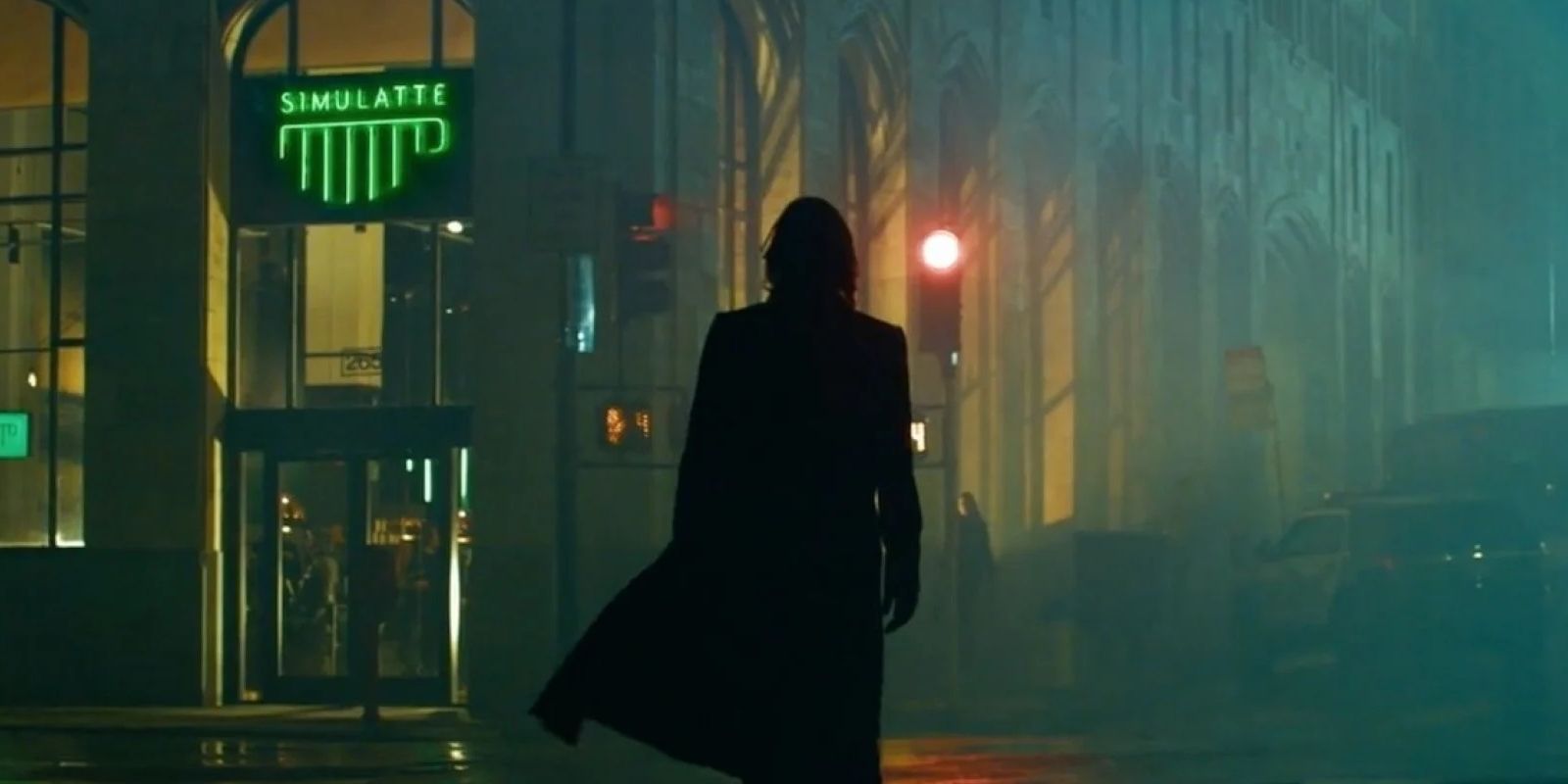The Matrix Resurrections has a totally different visual style than the original trilogy, but there’s a reason the fourth Matrix movie has its own aesthetic. 18 years after the release of The Matrix Revolutions, Lana Wachowski finally returned to the franchise for a fourth film. Warner Bros. had been clamoring for another Matrix movie for years and, as Wachowski pointed out in The Matrix Resurrections itself, the studio essentially threatened to make a Matrix movie with or without her. Wachowski co-wrote the script for the fourth Matrix film with Cloud Atlas’ David Mitchell and The Lazarus Project’s Aleksandar Hemon.
At the beginning of The Matrix Resurrections, Thomas Anderson is reintroduced as a video game developer. The Matrix movies are revealed to just be a video game series that Anderson conjured up. In its opening act, the film toys with the notion that all the previous movies’ events didn’t actually happen. Eventually, the movie reveals that Anderson is, indeed, Neo and that he did, indeed, escape from the Matrix and end the war between the humans and the machines. The Matrix Resurrections still doesn’t look like the previous movies, but there’s a reason for that.
The Matrix Resurrections Takes Place In A New Version Of The Matrix
The Matrix Has Been Rebooted
At the beginning of The Matrix Resurrections, Bugs learns that the machines are running old code of the Matrix on a loop. Neo is back under the impression that the simulation of the Matrix is actually reality. As far as he knows, Trinity is just a married mother, who he sees at his regular coffee shop. His therapist, The Analyst, has convinced him that the events of The Matrix trilogy all happened in his imagination. When Bugs shows up, she reveals that the Matrix is real after all, and the original trilogy really happened.
A new Matrix movie is in development with Drew Goddard attached to write and direct.
But this isn’t the same version of the Matrix seen in the original trilogy. This is a new, rebooted version of the Matrix. This explains why the fourth movie looks so different from its predecessors. The green-tinted visuals of the original trilogy reflected the look of that particular simulation, the one created to reflect the pinnacle of human society in 1999. The brighter, more varied color palette of The Matrix Resurrections highlights that this is a totally different version of the Matrix, one that reflects a totally different society.
The Matrix Resurrections Is Meant To Feel Different From The Original Movies
It’s A Meta, Non-Traditional Sequel
The Matrix Resurrections definitely has a different feel than the other movies, but that’s intentional — and not just because it takes place in a new iteration of the Matrix. The Matrix Resurrections is supposed to be a non-traditional sequel. The Matrix Reloaded and The Matrix Revolutions are sequels in the most traditional sense. They continue the story that began in the first film, build to an epic climax, and wrap up the saga with a definitive resolution of the ongoing conflicts. By comparison, The Matrix Resurrections is a very different kind of sequel.
The Matrix Resurrections is a meta commentary on the franchise itself, and the concept of sequels in general. It starts out with Anderson being told that Warner Bros. is demanding a sequel to The Matrix trilogy. There’s a whole sequence in which Anderson and his team of writers sit around a table and pitch ideas for what a new Matrix story could entail. Clearly, The Matrix Resurrections isn’t a typical sequel. The altered aesthetic reflects the fact that this is a totally separate work from the original trilogy; it’s its own thing.
The Matrix Resurrections’ Different Tone Might Have Played Against The Movie
It Might Have Made The Matrix 4 Too Different
In hindsight, the different tone and visual style of The Matrix Resurrections might have worked against the movie. It was already a radical departure from what Matrix fans were used to. It toyed with the notion that the entire original trilogy was a figment of Neo’s imagination, it recast two of the best Matrix characters, and it revealed that Neo’s heroism in The Matrix Revolutions was ultimately futile because the machines and their enslavement simulation eventually came back in full force. It takes the story in directions that no one was expecting.
If The Matrix Resurrections had felt a bit more like the original Matrix movies, with high-octane action and green-hued visuals, then those radical narrative decisions might have gone down a bit more smoothly.
It may have been a bridge too far to tell that story in a completely different style with a new tone and aesthetic. It was missing all the hallmarks of a Matrix movie: the digital rain was redesigned, the action sequences weren’t as exhilarating, and the pacing was much more cerebral. If The Matrix Resurrections had felt a bit more like the original Matrix movies, with high-octane action and green-hued visuals, then those radical narrative decisions might have gone down a bit more smoothly.







